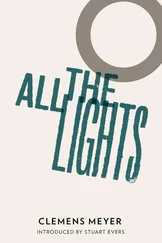‘Johnny Tranter, isn’t it?’ she said.
‘I did what you would have wanted,’ I said.
‘Did you? Well that’s good. Well done you.’
I liked it that she hadn’t even noticed Chloe.
Then Ma spoilt it and said, ‘Johnny, what nonsense are you talking? Take no notice, nurse.’
She walked away. Then something funny happened. Like someone took hold of my head and was trying to turn it round, and I had to move my feet to stop falling over. She’d got to the top of the steps, Amanda, and was standing there, not moving. Then she put the clothes on the wall and looked back at us. Didn’t wave or anything, just looked. There was a man in black clothes behind the glass door, waiting for her. I saw her pick up the clothes and go inside and they started talking. Then Ma grabbed my hand and yanked me away as if I’d done something wrong.
Ma didn’t understand. I don’t think she’ll ever understand. But this time I didn’t get cross or try to annoy her. So I looked up at her, sweetly, like Chloe does when she thinks she’s being clever.
‘You know something, Ma,’ I said. ‘I think I’m good at helping people.’
Then Chloe’s grinning face popped out from behind a tree, and suddenly I felt hungry and thought about watching telly and how it was getting a bit cold.
And at the gate another bus was coming in.
The regional paper – the Eastern Aegean Weekly – made much of the story and, by appearing to endorse the popular interpretation, had given it credence. Sister Anna had disappeared on the Thursday, the name day of Saint Annabel but, more tellingly, Ascension Day in the Christian calendar. The combined power of these associations had not only filled the island’s churches on the following Sunday, but had led to an invasion of Mount Vathos by the curious and the blindly faithful during the days that followed. The ancient monastery of Moni Agiou Ioanni – two thirds of the way to the summit and previously visited by only the most intrepid of travellers – was destined to become both a site of pilgrimage and a perennial tourist attraction.
I am not a native of this, one of the most easterly of the Greek islands. In fact I am an American, a graduate in aviation science at Washington State University. I came here when the Department of Conservation needed someone to pilot its newly acquired helicopter for forestry surveillance. But the little machine quickly found other uses and before long various remote communities on the island began to construct landing pads for use in emergencies. The monastery on Mount Vathos, at the limit of the forest and, at 965 metres, the highest habitation on the island, was arguably the most deserving of them all, until then being approachable only by a narrow path for the most part cut into the rock face. As an ambitious walker and climber during my time off from flying it was by this route, and not by air, that I made my first acquaintance with the monastery. That happened several months before Sister Anna disappeared.
For a long while I have speculated on why a site at such high altitude had been chosen, and by whom. Legend has it that a hermit lived here, but the splendour of the surroundings and the panoramic view of the Turkish coast, only a few kilometres away, somehow seem at odds with an ascetic life style. But as a means of survival the site was well chosen, occupying as it does a wide and fertile terrace indenting the mountain, unique on the island at that altitude. After negotiating the last few precipitous steps, travellers are surprised to find themselves in a green and luxuriant garden with roses and chrysanthemums, raspberries and currants, and vegetables of many kinds thriving in the shelter of fig, peach and pear trees. Having taken this in, their eyes follow the wide gravel pathway meandering through the garden to the buildings. Originally whitewashed but now grey with grime, they are of indeterminate shape and rather featureless, yet somehow still splendid in their setting. It would be difficult for a traveller coming upon them unexpectedly to guess their purpose, were it not for the high and brilliantly coloured glass windows of the chapel projecting out towards the sea on the eastern side.
My intention that day had been to skirt the buildings to gain access to the track leading up to the summit of the mountain and contemplate my next step from a point of vantage. I did not get that far. To my surprise a figure in the habit of a nun rose up from behind a clump of raspberry canes.
‘Good morning, brother,’ she called. ‘I am Sister Maria. It is customary for us to offer travellers hospitality. You are welcome to take bread with us. If you are interested you can also see our fine chapel.’ My Greek was just sufficient to make out what she said.
The spectacles perched upon the beaked nose above the blackness of her habit engendered in me mixed feelings of respect and revulsion. Crude though the analogy is I was sure that the arachnid qualities of Sister Maria cannot have been lost on other travellers passing this way. I sensed, too, that she herself was not only aware of the comparison but chose to cultivate it. She led me to the buildings and set me on a terrace facing the sea. A platter of dry crusts of bread was already waiting, along with a dozen or so cats attracted by my arrival. Having witnessed the swallowing of the first crust to her satisfaction, she left me to enter the building. Soon I heard her talking to someone deep within: muffled voices, speaking with urgency. Then she returned and led me to the chapel along a dank corridor sparsely lit with candles, with closed doors on either side and between each pair of doors a fresco so dark with age that its subject was barely discernible.
I remember how surprised I was at the chapel’s paucity of interest. The stained glass windows, close up, were disappointingly modern. The candles illuminated bare flaking walls that must once have been brightly painted. But its interest for me then, as will become clear, was of a different order. As I left, my way was barred by a collection plate held by another nun seated just within the door, so small in stature that I had not seen her when I entered. The remarkable thing about the plate was the large denominations of the notes it already contained. Startled by the tiny haggard face and too weak not to conform I put in my 2000 drachma note. It seemed a reasonable investment, however tenuous the outcome looked then.
Outside the chapel I took the first tentative step towards our goal. I tried to be casual. ‘They tell me you have a library here?’ I said. ‘Can it be visited?’
‘Who told you that?’ Sister Maria’s response was guarded.
‘Just someone in the town.’
‘What did they tell you?’
‘Oh, nothing specific… I just wondered…’
I suppose that strict honesty is an inviolable requirement of the moral code these ladies observed. After a moment of thought she said, ‘It is rumoured that there were once caves below these buildings. Books might have been stored there. I have never seen them.’
‘Rumoured?’
‘They were already sealed up when I came. That was forty years ago.’
My exit seemed hasty, probably because Sister Maria had sensed another traveller on the garden path. With no further word she hustled me to the terrace and left me to resume my ascent of the mountain.
Returning from the summit three hours later the garden was in shadow, the sheltered trees and bushes curiously still against an evening sky still in motion. In this quiet place a remark of Sister Maria came back to me. ‘There are always two of us,’ she had said. That thought stayed with me during my flight down the path, and lingered during the weeks that followed.
Summer had long passed when I saw the monastery again. The second nun, Sister Helena – the one holding the plate in the chapel – had become critically ill and Father Kalvos, the priest at the seminary on the coast, had asked me to fly her to the hospital. ‘She will never return to the mountain,’ he said. ‘But you cannot leave the other alone,’ I ventured. ‘Indeed not,’ he replied, ‘and that is why I have a second request. When you go you will take her replacement, Sister Anna? Sister Anna is new to the island and has not visited the mountain. She is twenty-eight years old, from an obscure convent in Czechoslovakia, about which I know almost nothing. We were very lucky to find her – or should I say she found us. It’s remarkable that someone so young and attractive should seek seclusion, but there we are. Oh, and like you she is an American.’
Читать дальше












